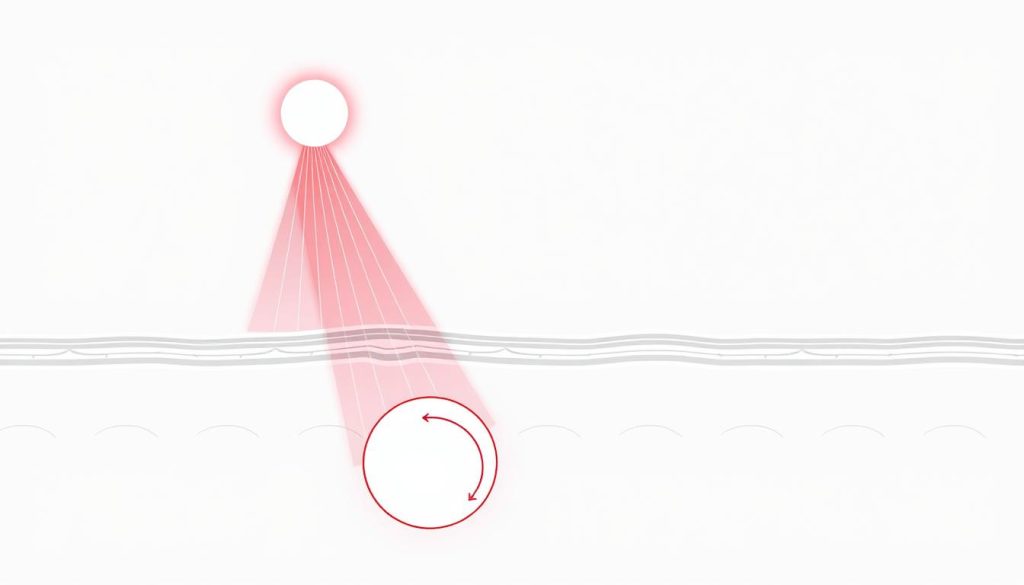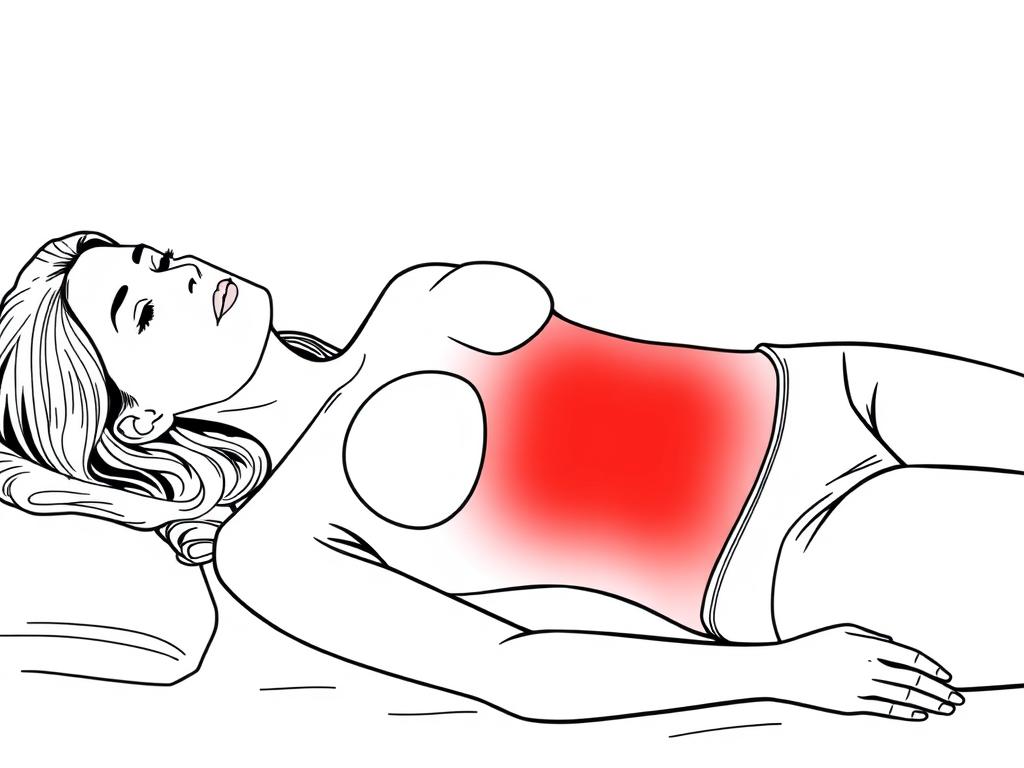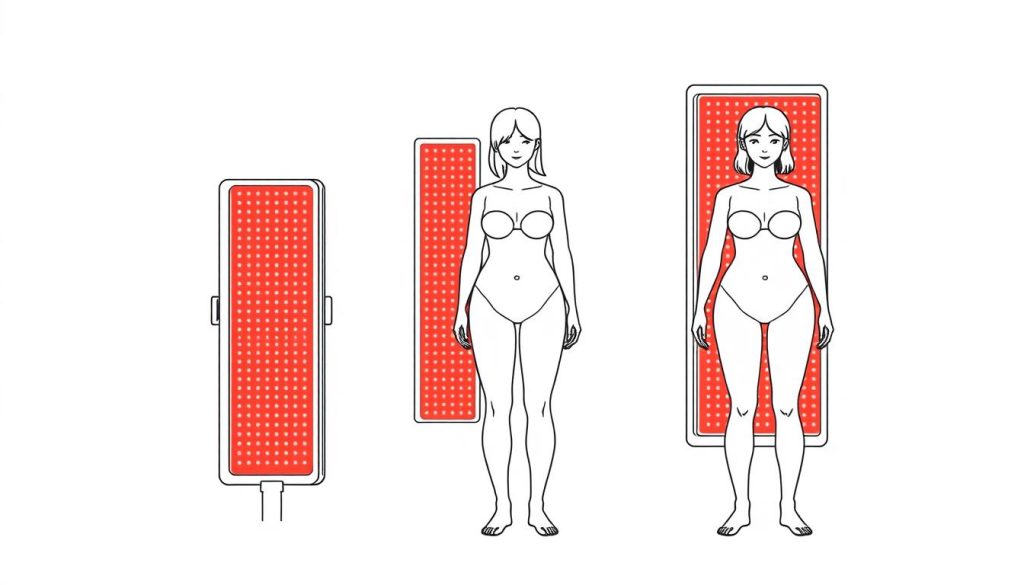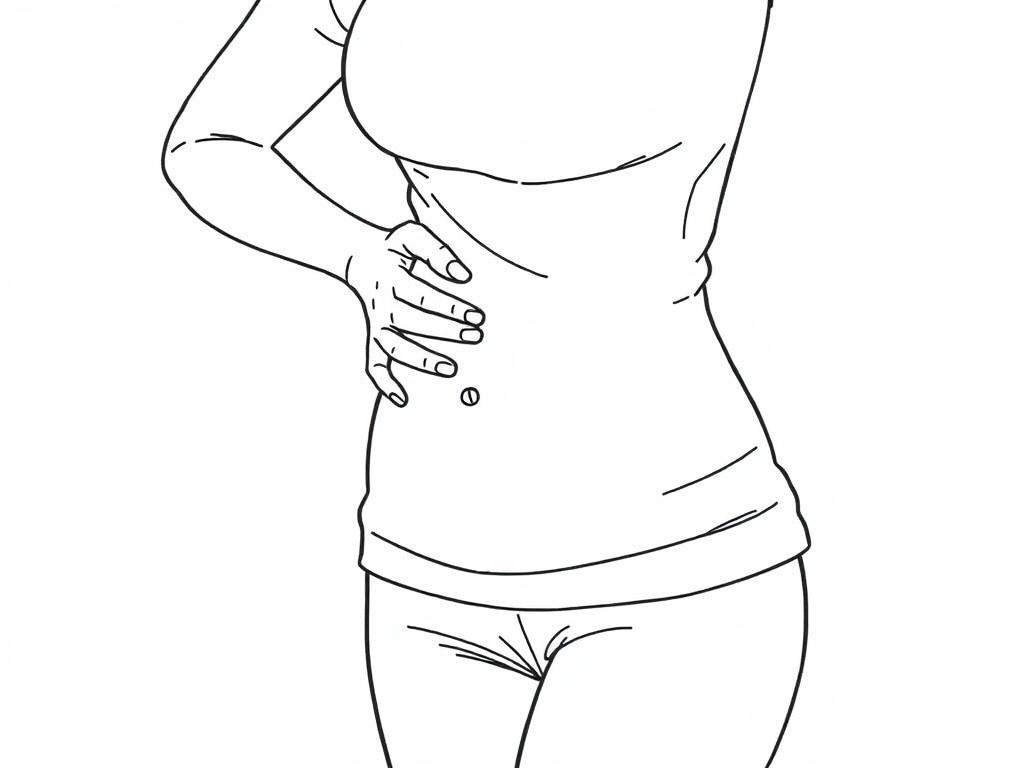Ovarian cysts affect approximately 8-18% of premenopausal women worldwide, with many experiencing pain, irregular periods, and fertility challenges. While conventional treatments range from watchful waiting to surgery, red light therapy (RLT) has emerged as a promising non-invasive alternative. This guide explores the science behind using red light therapy for ovarian cysts, comparing the most effective devices and protocols based on current research.
Understanding Ovarian Cysts: Types and Symptoms
Ovarian cysts can cause significant discomfort in the lower abdomen
Ovarian cysts are fluid-filled sacs that develop on or inside the ovaries. The most common types include functional cysts (follicular and corpus luteum), which typically resolve on their own, and pathological cysts like endometriomas, dermoid cysts, and cystadenomas, which may require medical intervention.
Common symptoms include pelvic pain (particularly during menstruation), bloating, fullness in the abdomen, and in some cases, irregular periods. More severe symptoms can include sharp pain, nausea, and vomiting if a cyst ruptures or causes ovarian torsion.
While many cysts resolve naturally within a few menstrual cycles, persistent or large cysts may lead to complications including hormonal imbalances, fertility issues, and in rare cases, ovarian cancer. This has led many women to seek complementary approaches like red light therapy alongside conventional medical care.
How Red Light Therapy Works for Ovarian Cysts
Red light therapy, also known as photobiomodulation or low-level laser therapy (LLLT), uses specific wavelengths of red and near-infrared light to stimulate cellular processes. For ovarian cysts, these therapeutic effects occur through several key mechanisms:
Anti-Inflammatory Effects
Ovarian cysts often trigger inflammatory responses in surrounding tissues. Red light therapy has been shown to reduce inflammation by modulating cytokine production and decreasing oxidative stress. A clinical study by Alves et al. (2018) demonstrated that red light therapy significantly reduced inflammatory markers in reproductive tissues.
Improved Mitochondrial Function
The mitochondria in our cells produce ATP (adenosine triphosphate), the primary energy currency for cellular processes. Red light is absorbed by cytochrome c oxidase in the mitochondria, enhancing ATP production. This is particularly important for reproductive tissues, which have high energy demands.
Enhanced Blood Flow
Red light therapy stimulates the release of nitric oxide, a vasodilator that improves blood circulation. Better blood flow to the ovaries can help reduce cyst size and promote healing. Research by Taniguchi et al. (2010) found that near-infrared light therapy improved blood flow to reproductive organs.
Hormonal Regulation
Some studies suggest that red light therapy may help normalize hormone production, which is crucial for women with hormone-related cysts like those associated with PCOS. A 2019 study published in the Journal of Biophotonics found that red light exposure helped regulate estrogen and progesterone levels in animal models.

Red light penetrates tissue to reach ovarian cysts, stimulating cellular repair mechanisms
Clinical Evidence for Red Light Therapy and Ovarian Cysts
While research specifically targeting ovarian cysts is still emerging, several human clinical trials have demonstrated promising results for red light therapy in reproductive health:
The National Institutes of Health has also recognized photobiomodulation as a promising area for reproductive health research, with ongoing studies examining its applications for various gynecological conditions.
Optimal Wavelengths for Treating Ovarian Cysts
Not all red light therapy is created equal when it comes to treating ovarian cysts. The effectiveness depends largely on using the correct wavelengths that can penetrate deeply enough to reach the ovaries:
Red Light (630-660nm)
These wavelengths penetrate several millimeters into tissue and are effective for surface-level inflammation. While they don’t reach the ovaries directly, they can help reduce systemic inflammation that may contribute to cyst formation.
Near-Infrared Light (810-850nm)
These longer wavelengths penetrate much deeper—up to several centimeters—making them ideal for reaching the ovaries. Research indicates that 830nm is particularly effective for reproductive tissue, as demonstrated in the Japanese studies by Taniguchi et al.
Combination Therapy
The most effective approach appears to be a combination of red and near-infrared wavelengths. This provides both surface-level anti-inflammatory benefits and deeper tissue penetration to directly affect the ovaries.
The Total Spectrum Compact from RLT Home delivers seven clinically-validated wavelengths (630nm, 660nm, 810nm, 830nm, 850nm, 1064nm, plus 465nm blue light) in one device, making it particularly well-suited for treating ovarian cysts. You can compare leading panels side-by-side here to find the optimal wavelength combination for your needs.
Effective Treatment Protocols for Ovarian Cysts

Proper positioning is crucial for effective treatment of ovarian cysts
Based on clinical research and practitioner experience, here are the most effective protocols for using red light therapy to address ovarian cysts:
Positioning and Distance
For optimal results, position the red light therapy device 6-12 inches from the lower abdomen, directly over the ovarian area. This ensures adequate light penetration while maintaining comfortable treatment temperatures.
Treatment Duration and Frequency
Most clinical studies used the following protocol:
Energy Delivery
Effective treatment requires delivering adequate energy to the target tissues. Studies show that 4-6 joules/cm² at the tissue level is optimal for reproductive applications. Higher-powered devices can deliver this energy more quickly, reducing treatment time.
The Total Spectrum Max with its 360 LEDs provides efficient energy delivery for the pelvic area, reducing session times while maintaining therapeutic effectiveness. Its high LED density ensures consistent coverage of the entire treatment area.
Comparing Red Light Therapy Devices for Ovarian Cysts
When selecting a red light therapy device for treating ovarian cysts, several factors are crucial for effectiveness:
| Feature | Why It Matters | Recommended Specifications |
| Panel Size | Must cover the entire pelvic area for effective treatment | Minimum 12″ × 12″ coverage area |
| Wavelengths | Different wavelengths penetrate to different depths | Combination of 630-660nm (red) and 810-850nm (near-infrared) |
| Power Density | Determines treatment time and effectiveness | Minimum 100mW/cm² at treatment distance |
| EMF Levels | Lower EMF is safer for reproductive health | Less than 2mG at treatment distance |
| LED Count | Determines evenness of coverage and treatment efficiency | Minimum 60 LEDs per square foot |
Leading Device Options
RLT Home Total Spectrum Series
The Total Spectrum Compact (30″ × 12″, 216 LEDs) provides ideal coverage for the pelvic area with seven clinically-validated wavelengths. The zero-EMF design makes it particularly suitable for reproductive health applications. The Pain & Inflammation mode is specifically designed for conditions like ovarian cysts.
PlatinumLED BioMax Series
PlatinumLED pioneered dual-chip technology, allowing multiple wavelengths from each LED. Their BioMax series offers good power density but has fewer wavelength options than RLT Home devices. They provide solid coverage for pelvic applications.
Joovv Solo
Joovv has established strong medical partnerships and clinical research. Their modular design allows for expansion, though at a higher price point. They offer fewer wavelength options but provide consistent power delivery.
The Total Spectrum Compact provides ideal coverage for treating the pelvic area
Practical Considerations for Home Treatment
Treatment Area Setup
Create a comfortable space where you can lie flat with the device positioned over your lower abdomen. Some users find it helpful to place the device on an adjustable stand or suspend it from above for hands-free treatment.
Clothing Recommendations
For maximum light penetration, expose your skin directly to the light. Wear minimal clothing or use a light-colored, thin fabric if needed for comfort. Dark or thick clothing will block the therapeutic light.
Tracking Progress
Keep a journal of your symptoms, treatment sessions, and any changes you notice. Many women report gradual improvements over 4-8 weeks of consistent treatment. Consider tracking:
Complementary Approaches
Red light therapy works best as part of a comprehensive approach. Consider combining with anti-inflammatory nutrition, stress management, and appropriate medical care under your doctor’s supervision.
Creating a comfortable home treatment space enhances consistency and results
Safety and Side Effects
Red light therapy is generally considered safe with minimal side effects when used properly. However, there are important considerations specifically for ovarian cyst treatment:
When to Consult a Doctor
Always consult with your healthcare provider before beginning red light therapy, especially if:
Potential Side Effects
Side effects are rare but may include:
These typically resolve quickly and often diminish with continued use. The zero-EMF design of RLT Home devices minimizes potential concerns about electromagnetic field exposure to sensitive reproductive tissues.

Always consult with your healthcare provider before beginning red light therapy for ovarian cysts
User Experiences and Case Studies
“After three months of consistent red light therapy with the Total Spectrum Compact, my ultrasound showed a 40% reduction in my ovarian cyst size. The pain during my period has decreased significantly, and my doctor is impressed with the progress.”
While individual results vary, many women report improvements in several areas after 8-12 weeks of consistent red light therapy treatment:
Symptom Improvements
Measurable Changes
Tracking your progress can help identify improvements that develop gradually over time
Choosing the Right Device for Your Needs
Selecting the optimal red light therapy device depends on your specific situation, budget, and treatment goals:
For Targeted Treatment
The Total Spectrum Mini (12″ × 12″, 72 LEDs) provides focused treatment for the specific area where ovarian cysts are located. Its compact size makes it easy to position precisely over the lower abdomen, though treatment times may be longer due to the smaller coverage area.
For Optimal Coverage
The Total Spectrum Compact (30″ × 12″, 216 LEDs) offers the ideal balance of coverage area and power for treating ovarian cysts. It covers the entire pelvic region while maintaining the power density needed for deep tissue penetration.
For Full-Body Benefits
The Total Spectrum Ultra (64″ × 12″, 480 LEDs) provides full-body coverage, addressing both the ovarian area and potential systemic factors that may contribute to cyst formation. Its motorized stand allows for precise positioning over the pelvic area.

Different device sizes offer varying coverage areas for treating ovarian cysts
Find Your Ideal Red Light Therapy Solution
Not sure which device is right for your specific needs? Compare the top red light therapy panels side-by-side to find the perfect match for treating ovarian cysts and other health concerns.
An Integrative Approach to Ovarian Cyst Management
For optimal results, red light therapy works best as part of a comprehensive approach to managing ovarian cysts:
Nutritional Support
Anti-inflammatory foods can complement the effects of red light therapy:
Stress Management
Chronic stress can worsen hormonal imbalances that contribute to cyst formation:
Combining red light therapy with nutrition, stress management, and medical care offers the best results
Medical Monitoring
Regular monitoring by your healthcare provider remains essential:
Conclusion: Is Red Light Therapy Right for Your Ovarian Cysts?
Red light therapy offers a promising, non-invasive approach for managing ovarian cysts with minimal side effects. The growing body of clinical evidence supports its effectiveness for reducing inflammation, improving blood flow, and potentially shrinking cysts over time.
For optimal results, consider devices that offer both red (630-660nm) and near-infrared (810-850nm) wavelengths to address both surface inflammation and deeper ovarian tissues. The Total Spectrum series from RLT Home provides the comprehensive wavelength coverage needed for effective treatment, along with zero-EMF operation that’s particularly important for reproductive health applications.
Remember that consistency is key—most women see the best results after 8-12 weeks of regular treatment, 3-5 times weekly. Track your progress and work with your healthcare provider to monitor changes in your cysts and symptoms.
Ready to Try Red Light Therapy for Your Ovarian Cysts?
With RLT Home’s 60-day risk-free trial and 3-year warranty, you can experience the benefits of professional-grade red light therapy with confidence. Compare the top panels to find your perfect match.
— David, independent RLT researcher
Frequently Asked Questions About Red Light Therapy for Ovarian Cysts
How long does it take to see results from red light therapy for ovarian cysts?
Most women begin noticing improvements in symptoms like pain and bloating within 4-6 weeks of consistent treatment. Measurable changes in cyst size typically require 8-12 weeks of regular therapy (3-5 sessions weekly). Results vary based on cyst type, size, and individual factors.
Can red light therapy completely eliminate ovarian cysts?
While red light therapy can help reduce cyst size and symptoms, complete elimination depends on the type and cause of the cyst. Functional cysts may resolve more readily than endometriomas or other pathological cysts. Clinical studies show significant reduction in size and symptoms, but results vary by individual.
Is red light therapy safe to use with other ovarian cyst treatments?
Red light therapy generally complements other treatments safely, including hormonal medications and dietary approaches. However, always consult your healthcare provider before combining treatments. Some medications may cause photosensitivity, which could affect how you respond to light therapy.
What’s the difference between red light therapy and infrared saunas for ovarian cysts?
While both use forms of light, they work differently. Red light therapy delivers specific therapeutic wavelengths directly to tissues to stimulate cellular processes. Infrared saunas primarily generate heat to induce sweating and general circulation benefits. For ovarian cysts, targeted red light therapy with specific wavelengths has more clinical support.
Can I use red light therapy during my period if I have ovarian cysts?
Yes, red light therapy is generally safe to use during menstruation. Some protocols actually recommend beginning treatment on day 1 of your cycle. Many women report that red light therapy helps reduce period pain associated with ovarian cysts. As always, if you experience any unusual symptoms, consult your healthcare provider.

Always discuss red light therapy with your healthcare provider as part of your treatment plan

